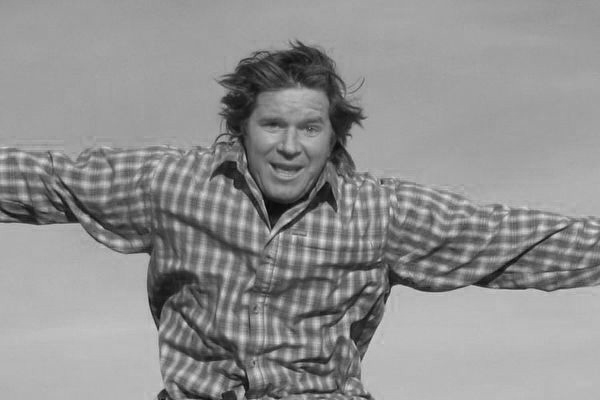
 Fred Williams
Brand Manager, Petersen’s 4Wheel & Off Road
Fred Williams
Brand Manager, Petersen’s 4Wheel & Off Road
Everyone has a dream engine they’d like in their 4x4. Some want power, some want economy, some want light weight, some want big torque, and most want everything—and they want it for free. We decided to look at three engines we’re hoping to see swapped into a trail rig soon. Not all of these are possible, responsible, affordable, or even reasonable, but we’re pretty sure they would all be cool.

Let us know when you’ve got them swapped into your own project, though we assume it may be a couple of years. We’re sure the logistics and electronics of each swap will be a big task, but nothing is insurmountable, and we’re pretty sure these three will have enough interest to make it happen.
The Motus Four-Banger
If you are looking for a four-cylinder engine to swap into your next 4x4 then you’re probably concerned about weight. We’ve been hearing about this Motus V4 engine for a few years now and think it would be a really cool powerplant for a lightweight Samurai, Jeep, or buggy. The engine is rated at around 120 lb-ft of torque at 4,000 rpm and around 185 hp at 7,000 rpm, so it’s not a low-end torque monster like a big-block, but it also only weighs 130 pounds and is only 19 inches wide. Loosely based on a GM V-8, the Motus is designed and built in the U.S. for motorcycles but has already been tested as a standalone crate engine option, even being tested in dune buggy.

The 90-degree pushrod Motus engine displaces just around 100 ci (1.6L) so displacement is not something you’ll be bragging about around the campfire, but that isn’t the reason for this little lump. We can imagine it revving like a banshee in a light two-seater dune machine, but properly geared it could tiptoe down a rock trail without the girth of bigger, heavier V-6 or V-8 engines.
Motus is developing a 9-inch bellhousing off the back of the engine so that it can be adapted to various transmissions. Plus, it is fuel-injected and a drive-by-wire unit, so it should run smoothly over obstacles and be relatively easy to adapt.
We have no definite price on these peppy little powerplants, but we guess they would be around $10,000 if you consider that they were developed from scratch and custom-built without the high production volumes of most OEM engines.
The Ford Six-Shooter With Boost
Ford began offering the EcoBoost twin turbocharged V-6 engine in F-150s back in 2011, and it has been welcomed with rave reviews. We built an F-150 for our Ultimate Adventure trip back in 2011 and had a great experience with it, so why hasn’t it found a market yet as a crate engine or swap candidate? There have been rumors over the past two years that a crate version may be available, but so far those are still just rumors. The engine was touted as offering V-6 economy with V-8 power. We’re not so convinced on the economy side, but we can say we think it has great power. Out Ultimate Adventure truck was able to break loose the 40-inch Nittos with ease.

The 3.5L Ford EcoBoost V-6 uses twin turbos and direct injection, making it very similar to a diesel engine. However, it still has spark plugs for igniting the fuel/air charge. The combination of turbo and direct injection, plus the addition of variable camshaft timing and a high compression ratio, makes for a very dynamic engine.
Swapping this engine into your old Bronco or F-150 means a fair number of hurdles must be cleared. One such item is the need for a power steering pump mount on the engine, as most of these engines came in vehicles with electric power-assisted steering. Another hurdle the electronics required to run such an engine. You may find that keeping it coupled to the factory six-speed automatic transmission is the best option for fewer swap headaches. Plus, for optimal performance you’ll want to keep an intercooler on the charge air side, adding packaging complexity.
This 214ci engine packs a healthy 365 hp at 5,000 rpm, and a grunty 420 lb-ft of torque down low at 2,500 rpm. It is robust and powerful but brings new technological headaches compared to the good old days of swapping in a V-6 with a carburetor on top. We expect the aftermarket will eventually come up with a standalone engine controller for this engine, but it may be a while because these new EcoBoost engines still demand a premium on the used market.
New Chevy Small-Block V-8
The Chevy small-block V-8 is probably the most boring engine to swap into anything. There are a gazillion kits, adapters, headers, harnesses, and parts to put a Chevy V-8 in whatever 4x4 you can dream of, so why did we pick this as a dream engine? Because starting in 2013 Chevy will have a brand-new V-8. The last generation of V-8 stepped ahead of its ancestors. Will this new direct-injection V-8 small-block, the Chevy Generation 5 V-8, be as popular?

Going to press we know little about the full lineup of GM V-8s coming soon, but we have seen info on the 2013 Corvette engine known as the Gen V LT1. This is not to be confused with prior LT1s, as this has a healthy 450 hp pumping from its 6.2L aluminum block and an equal rating on torque.
This engine retains the classic GM bellhousing bolt pattern, which should make adapting it to just about any transmission possible. The verdict is still out on whether the engine will be fitted with a power steering pump, or if GM will follow the herd for fuel economy with electric power-assisted steering. Either way, mounting a steering pump should not be impossible for the dedicated swapper of the future.
The direct fuel injection (same as on the EcoBoost) allows greater combustion efficiency with a more controlled fuel/air mixture, a cooler combustion chamber allowing a higher compression ratio (11.5:1), and less emissions pollutants. The required high-pressure fuel pump is driven by the new “tri-lobe” camshaft. This results in nearly 2,200 psi of fuel rail pressure to feed the eight fuel injectors.
All this technology means the aftermarket will have an uphill battle to “crack the code” of making the new direct-injection V-8 engines ready to swap in our old 4x4s, but as they have been doing so since that first Chevy V-8 debuted in 1955, we feel confident this latest version will be no different.
The new LT1 is being touted as the next Corvette engine, but by the time this issue hits the newsstand we will also have information on the new generation of small-block that will be showing up in the Silverado and Sierra pickup trucks. We expect something similar in design but with various displacements and tuned for torque. We have even heard that there may be a new direct-injection version of the dependable old 4.3L V-8 in the works.
Runner-Ups (aka Diesels)
We will get lots of complaints that none of our dream engines for swapping are diesels, so before you get angry and start rolling coal in our directions let us throw out a few honorable mentions of engines that use the green pump. However, we think one of the biggest fallacies of diesel swaps is the idea that you can swap in a diesel to save money on fuel. The fact is we doubt you’ll make back the money on your engine swap any time soon. But if you are looking for a cool, clattering, torque monster engine that usually gets good fuel economy and is fun and unique to drive, then we cannot deny that a diesel may be right for you.

First, we’ve heard lots of people extolling the virtues of the Cummins 4BT four-cylinder. We’re not convinced. These engines are heavy, loud, and rough, and we just don’t idolize them the way many think we should. Yes, they have torque and may make a good trail rig, but as a daily driver they may leave something to be desired. However, we have not had a chance to spend any time with the computer-controlled common rail four-cylinder Cummins. The common rail technology allows for much better fuel injector control, and this results in better mileage, smoother running, and generally a more refined and powerful engine. The Cummins common rail four-cylinder engines are hard to find but would be one diesel we would consider swapping into a 4x4.
The next diesel we would like to see in a 4x4 here in the states in the Toyota 4.5L V-8 diesel, also known as the 1VD-FTV. This little diesel is awesome with gobs of available torque (317 lb-ft at 1,200 rpm) and respectable power (202 hp at 3,400). We got to drive one once in a foreign Land Cruiser, but as of yet Toyota hasn’t brought one into the U.S. in a production vehicle. We can’t claim that swapping a foreign-only engine would be easy, but it would be cool.
The final dream diesel would be the Volkswagen V10 diesel offered in the Touareg SUV. This 90-degree engine displaced just 5.0L and spewed just 300-some horsepower, but it ruled with over 550 lb-ft of torque. However, this engine is a long way from that old all-mechanical diesel from ’80s and early ’90s pickups.
In fact, all of the engines in this story will require some groundbreaking electronics to make them run well outside of their original OEM applications, and unfortunately most OEMs are less than helpful when it comes to information or assistance to make them run in anything other than what the factory intended. As time goes on, fewer and fewer engine swaps will be easy, but that doesn’t mean we’ll stop dreaming and striving to make them happen. However, it may be easier to take those original vehicles and upgrade the rest of the drivetrain to make them work off-road.